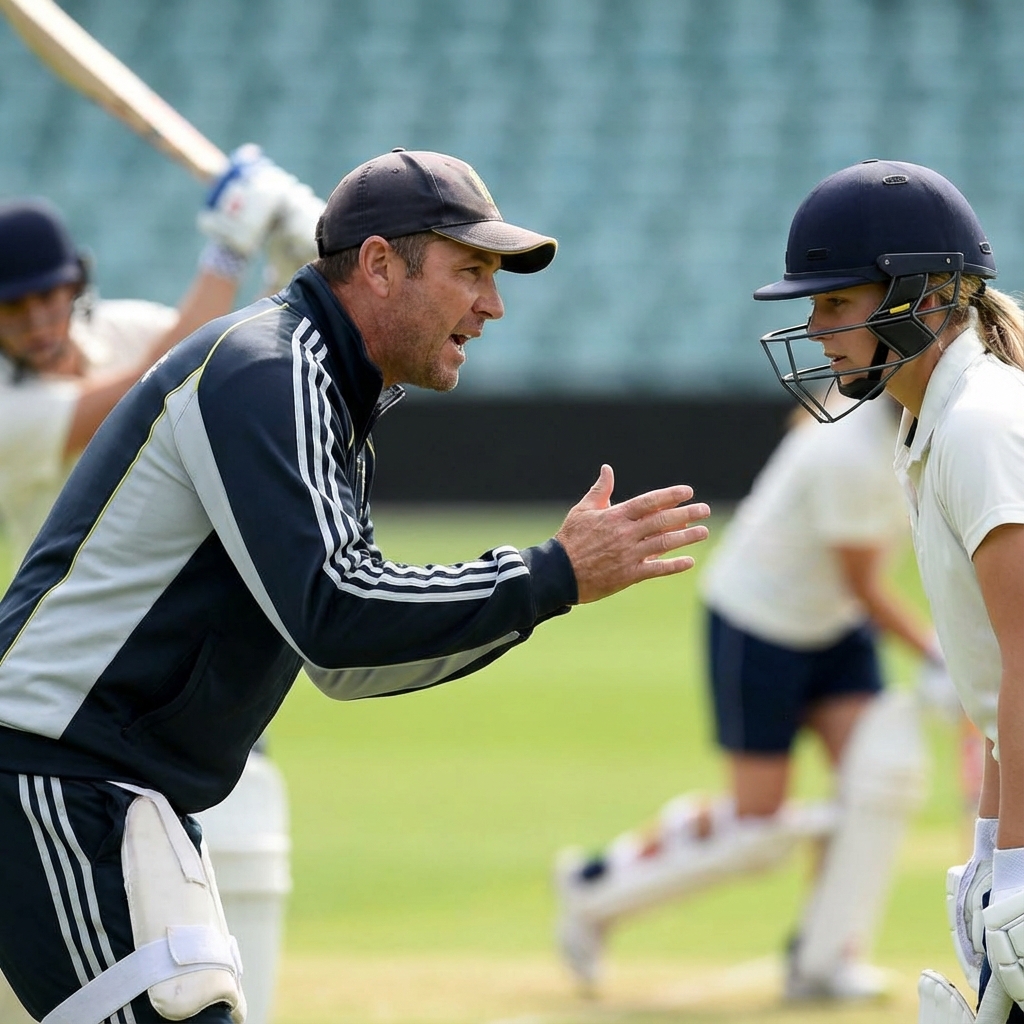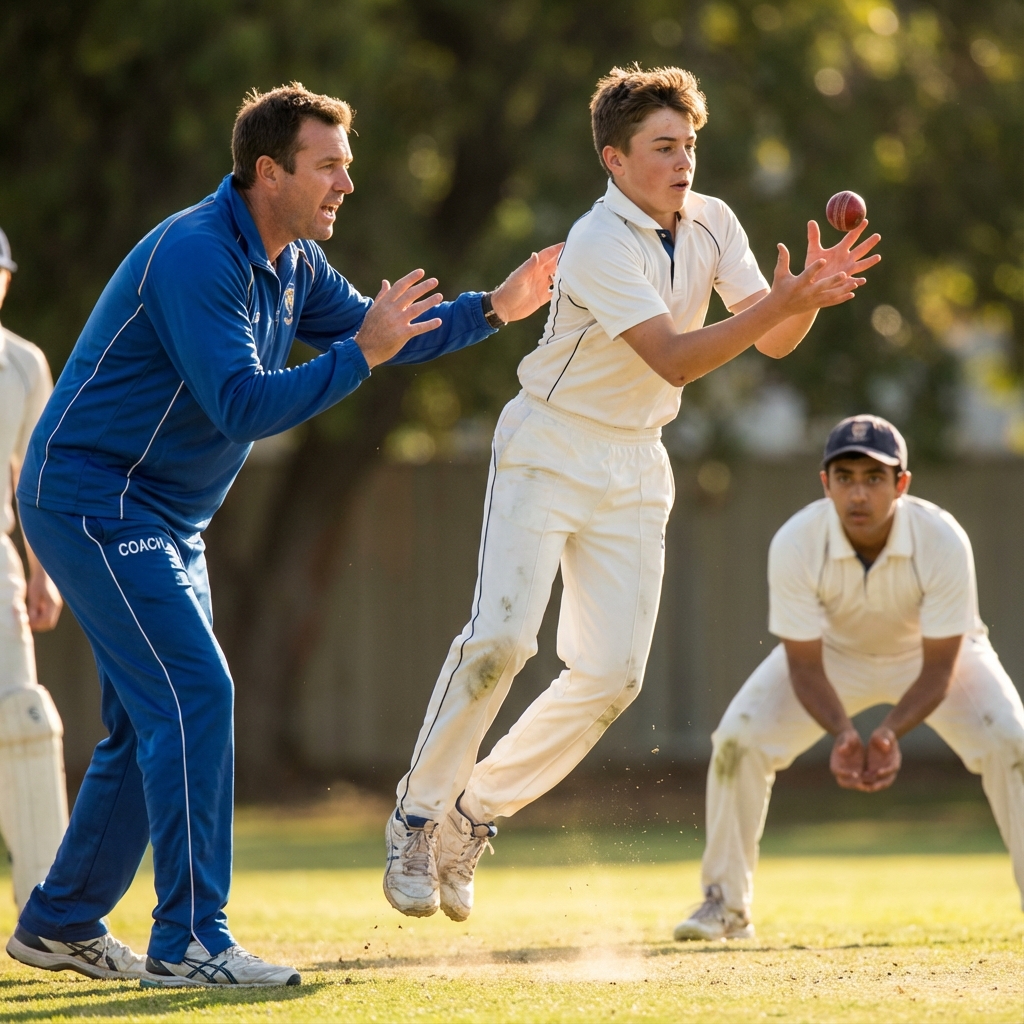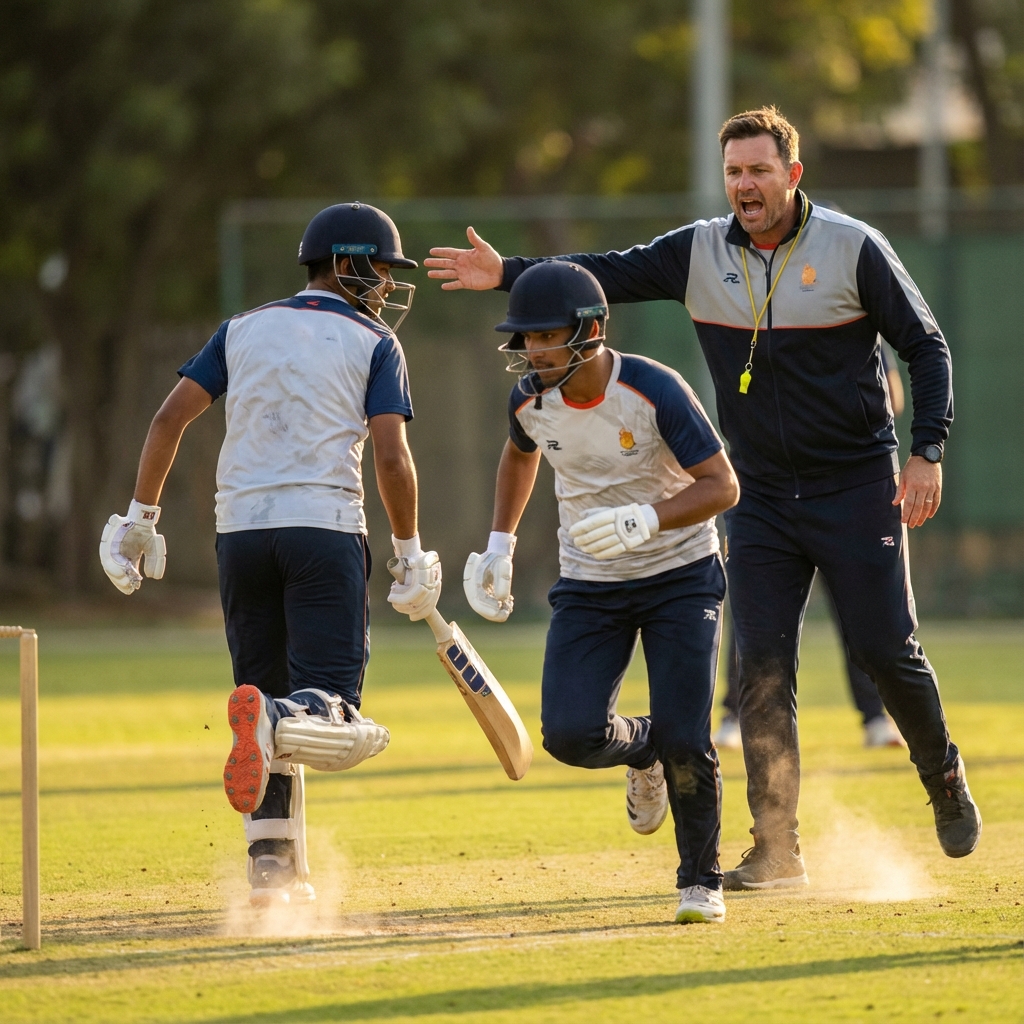This game can be played in teams (6-10 a-side) or in pairs (8-10 players).
Rules of the game:
There should be a batter at both ends.
If playing in pairs, give each pair two or three wickets. If playing in teams, when a wicket falls it is the turn of the next batsman. Tip and run, or two or three balls to make a run.
The coach throws either all front foot defence or all back foot defence bowls.
The fielders must stay on the cones or with one hand on the wall until the ball is thrown, otherwise batsmen automatically get a two run bonus.
Ways of getting out:
Bowled, caught, run out, stumped, playing an attacking shot, or failing to score off the limited number of deliveries.
The batsman can only score singles but the boundaries count for overthrows.
Overthrows: side walls = 2 runs, back wall behind wicket keeper = 1 run, front wall = 4 runs (Unless you hit a 4 you can run singles to add to the side and back wall scores.)
If a batsman leaves the ball it does not count and he does not have to run.
If the batsman plays and misses it counts as a delivery
Players must try and play with the full face of the bat as much as possible, even when trying to work the ball into gaps.
This can be done by maintaining a high elbow in the shot, and just a turn of the wrists upon impact.

Game-based training and match simulation prepare players for real competition more effectively than isolated drills. Modern coaching integrates pressure scenarios, decision-making, and competitive situations into every training session.

Catches win matches remains cricket's truest saying. From high balls under lights to sharp slip catches, the ability to hold chances consistently separates winning teams from those that let matches slip away.

Elite running between wickets adds significant runs without risk. Quick singles, converted twos, and intelligent strike rotation separate the best batting partnerships from average ones across all formats.